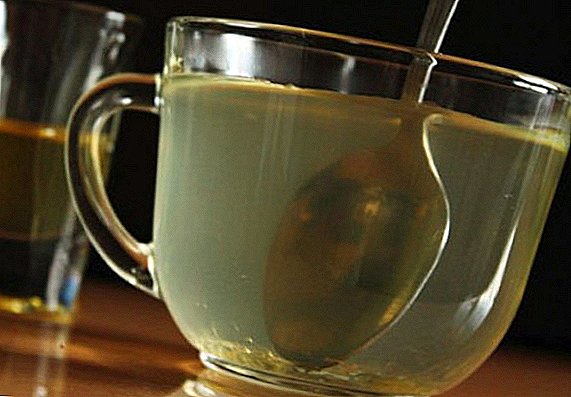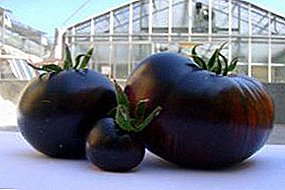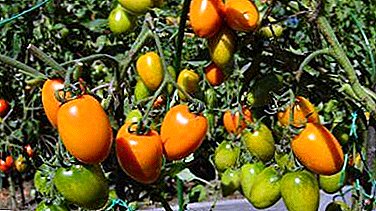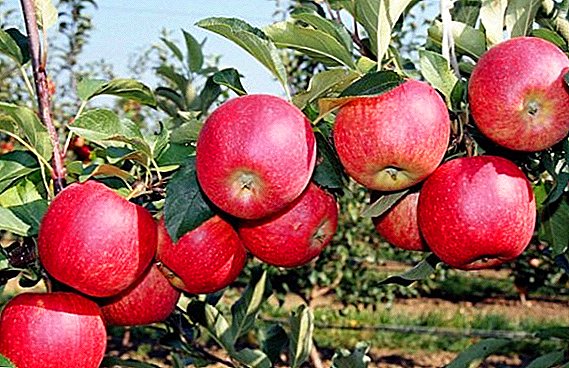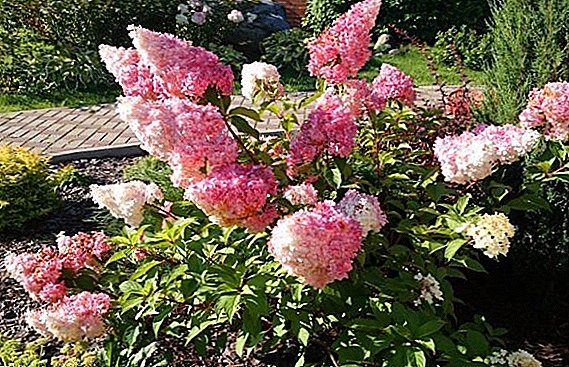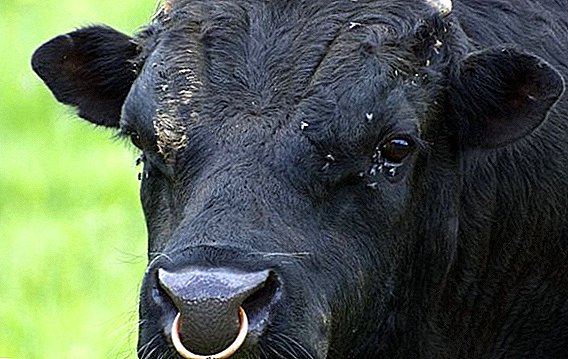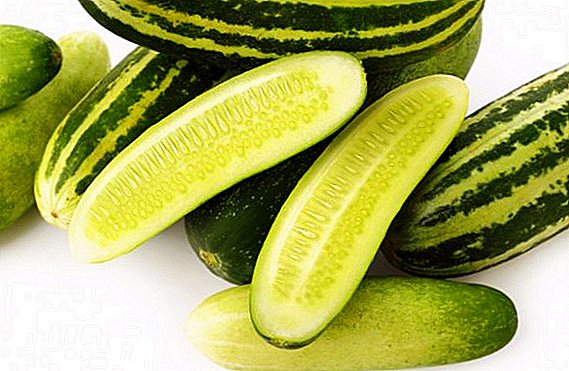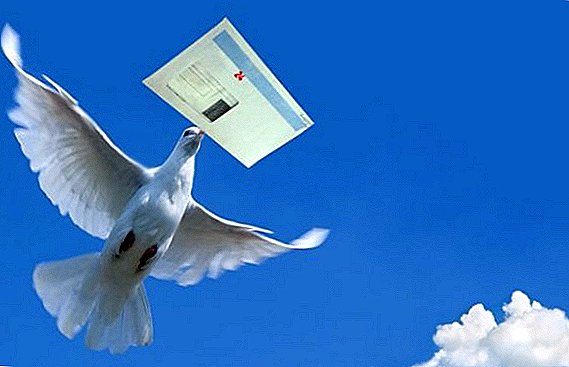 In the modern world, communications are carried out at an incredible speed through e-mail, instant messengers, and telephone communications. However, in ancient times, messages were transmitted using birds - pigeons. Since they no longer perform their old function of implementing postal services, they are often called sport pigeons and used for competitions. As such, the breed of the pigeon does not exist, the pigeon can be called a pigeon, which has the appropriate abilities, and which successfully passes the careful selection and training stage. Some breeds of pigeons have a great ability to send mail, and what kinds of birds it is - we will consider later in the article.
In the modern world, communications are carried out at an incredible speed through e-mail, instant messengers, and telephone communications. However, in ancient times, messages were transmitted using birds - pigeons. Since they no longer perform their old function of implementing postal services, they are often called sport pigeons and used for competitions. As such, the breed of the pigeon does not exist, the pigeon can be called a pigeon, which has the appropriate abilities, and which successfully passes the careful selection and training stage. Some breeds of pigeons have a great ability to send mail, and what kinds of birds it is - we will consider later in the article.
Pigeon mail history
Pigeon Mail is the most ancient type of postal service. The use of pigeons for the delivery of messages began in ancient times. So, this type of air mail was common among the Greeks, Romans, Egyptians, Persians and Jews for military, trade and other purposes.
During the First and Second World Wars, pigeons were also actively used to transmit messages, but with the development of radio communications, the need for birds has drastically decreased.  To date, specially trained pigeons are used for competitions.
To date, specially trained pigeons are used for competitions.
Did you know? During the period of the First and Second World Wars, Great Britain used about 200 thousand mail-military pigeons.
How to determine where to fly, and at what distance fly
This method of communication is based on the pigeon’s amazing ability to return to its nest, even if it is brought to a very great distance. That is, it turns out that to use their pigeons you must first take from the addressee and go with them to their destination, and then send back to the nest.
Until now, scientists have not agreed on how the birds determine the correct direction of flight. According to one version, it is believed that pigeons can perceive infrasound. The human ear can not catch it, however, these waves are emitted everywhere as a result of natural disasters, weather phenomena, man-made human activity. Waves can spread over a long distance. Pigeons, using infrasound, get a kind of infrasound map of the area on which they can navigate.  According to other theories, birds use Earth's geomagnetic fieldand also have a “built-in compass” and are oriented by the sun. In addition, pigeons can memorize the terrain and smells well, which also allows you to quickly find your way home.
According to other theories, birds use Earth's geomagnetic fieldand also have a “built-in compass” and are oriented by the sun. In addition, pigeons can memorize the terrain and smells well, which also allows you to quickly find your way home.
Typically, pigeons can cover distances of up to 1,100 km upon reaching 3 years of age, on the flyers it takes an average of 15-18 hours. But especially hardy and capable individuals can overcome a great distance in search of their nest. The average flight speed is 60-70 km / h, but some birds can reach speeds of up to 100 and even 150 km / h. To transport messages, the note is folded into a tube and tied to the bird's foot. For the letter even came up with a special term - pigeogram. 
Key representatives
As we indicated earlier, some breeds of pigeons have more pronounced abilities for training and orientation in space, because from time immemorial they were selected for transmitting messages and carried out painstaking selection work to improve working qualities. Next, we consider the characteristics of the main types of pigeons.
Some breeds of pigeons contain for dietary meat.
English Quarry
Contrary to the name, the birthplace of the breed is Asia. In the XV century, the bird came to Europe, where the flight characteristics of birds were improved. This breed is distinguished by high flight qualities, rapid, straight flight.  Main characteristics:
Main characteristics:
- weight: 560-650 g;
- body length from the beginning of the beak to the tip of the tail is 43-47 cm;
- plumage: short, dense, feathers - hard, color can be different (black, white, gray, chestnut, variegated);
- case: powerful, oblong shape with a wide chest and a long back;
- head: small, oblong shape;
- neck: very long, thin;
- beak: long (up to 5 cm), the color depends on the plumage and can be brown or pink. Covered with skin growths that only increase with age and in 3-year-old individuals reach the size of a walnut;
- tail: long, low down, feathers touching the floor;
- wings: strong, powerful, long, shoulders are pushed forward, the tips of the wings converge on the tail;
- span: up to 70 cm;
- lifespan: 15-25 years.


Belgian (Antwerp)
"Belgians" are champions among the breeds of pigeons in flight speed. Often used as decorative birds. Spectacular looks and excellent flight characteristics of the birds received from their parents: the German breed of pigeons, Antwerp exhibition and gulls-tourbits. This breed originated in the 19th century in the Belgian city of Antwerp.
Main characteristics:
- plumage: dense, short, primary color - white, wing flaps may be brown or gray;
- case: wide, powerful, with well-developed muscles, horizontally set;
- head: powerful, broad at eyes, massive;
- neck: thick and short;
- beak: medium length, pink shade, has a small ceramum;
- tail: short and narrow, horizontally set;
- wings: powerful, tight to the body, completely covering the back;
- lifespan: 15-20 years.


Did you know? The price for this breed is as high as the sporting achievements of birds. For example, in 2012 a Belgian breed pigeon was sold for 328 thousand dollars to a Chinese entrepreneur.
Deutsch
This is a very common beautiful decorative breed of pigeons, which is often used for exhibitions or as a productive bird. It appeared relatively recently, at the beginning of the 20th century, and is very similar to the previous breed - Antwerp birds.
Main characteristics:
- plumage: dense, smooth and very thick, colors can be different, but the basic color should evenly cover the whole body, except for the tips of the tail and wings, various color and pattern options are allowed;
- case: stocky, strong, horizontally set, tapers to the tail, with a wide chest;
- head: wide near the eyes and narrowed towards the beak, the profile is finely delineated, the back of the head is rounded;
- neck: oblong, gracefully curved, extending to the chest;
- beak: medium length, blunt, has a broad base, may be black or pink hue;
- tail: narrow, very short (beyond the wings goes 2 cm);
- wings: medium length, wide;
- legs: powerful, non-feathery, red.


Russian
Beautiful, strong birds with high flying qualities. Main characteristics:
- plumage: dense, thick. Most often there is a pure white color, however, the presence of a motley pattern with any color combinations is allowed;
- case: slender, graceful, placed horizontally, with a convex chest;
- head: small size, elegant;
- neck: medium length, thin, expands at the shoulders;
- beak: short and sharp, with a curved tip;
- tail: narrow, medium length, set horizontally;
- wings: powerful, narrow and long, the shoulders protrude in front of the chest, the tips of the wings are raised above the body;
- legs: not plumed, red shade, medium length.

The battle pigeons got their name not for fighting qualities, but for the loud sound battle with their wings, which they emit in flight. This is typical of such breeds as Armavir, Baku, Takla, Uzbek, Agaran, Kasan.
Dragoons (dragons)
These are beautiful decorative birds with a difficult temper and an unusual name. They are not similar to dragons, but quite to their nearest feathered relative and ancestor - the English career - completely. At first, this breed had excellent flight qualities, and even managed to press the quarries, but with the development of faster communications, the dragon began to be used as a decorative exhibition breed.  As a result, the birds lost their former flying qualities and changed their appearance: they became heavier, squat and wide. To date, they are not used in sports.
As a result, the birds lost their former flying qualities and changed their appearance: they became heavier, squat and wide. To date, they are not used in sports.
Main characteristics:
- plumage: dense, thick and tough. Feathers are brilliant, colors are even, various shades with belts of contrasting color are allowed;
- case: wide, muscular, powerful, with a large convex chest;
- head: small, oblong. Crown - sloping;
- neck: oblong, thick, expands at the shoulders;
- beak: oblong, powerful, in the upper part covered with warty outgrowths of pink or whitish tint;
- tail: short, narrow;
- wings: powerful, massive, wide, long gather on the tail;
- legs: powerful, muscular, medium length, covered with feathers.


Find out how many pigeons live in the wild and at home, how to find out the sex of a pigeon and dove mating; What diseases do street pigeons suffer?
Czechs
Czech postal (sports) pigeons are distinguished by physical strength and strong immunity, at the same time they are very loyal, are easily domesticated and are trained, and are generally open to work with humans. The breed is very popular in competitions. High flying qualities pigeons can exercise at short distances.
Main characteristics:
- plumage: smooth, thick. Color - light, with belts of a contrasting shade;
- case: smooth, harmoniously folded, horizontally set;
- head: small, flattened on the sides, with a wide frontal part;
- neck: oblong, at the shoulders - extended;
- beak: medium length, narrow and sharp, with pronounced waxes;
- tail: small, narrow, almost completely covered by wings;
- wings: strong, long, pointed at the ends, shoulders slightly protruding in front of the chest.

Conditions of detention
Keep postal (that is, sporting) pigeons need to be clean, warm, with a constant possibility of departure.
Familiarize yourself with tips on breeding pigeons: how to build a dovecote, keep pigeons in winter.
Aviary should meet the following conditions:
- location: Many breeders advise to place dovecot as much as possible in the attic, in any case, the aviary should be away from farm buildings, cesspools, power lines. When building it is worth placing on the south side;
- dimensions: one pair of pigeons will require at least 0.5 square meters. m square, the height of the room should not exceed 2 m. With a large number of birds, the dovecote is divided into sections of 15 pairs each;
- ventilation: for ventilation, it is convenient to make double doors (main and lattice), as well as exhaust hood on the ceiling;
- lighting: light day for birds should last about 12 hours, so if necessary, you need to use additional electric lighting;
- heating: Usually pigeons do not need to heat the enclosure. It is necessary to ensure that in winter the temperature in the room does not fall below + 5 ... + 10 ° С, for this, the pigeon house must be well warmed and the litter used. It is also very dangerous for birds to overheat, because in summer the optimal mark is +20 ° C;
- litter: used in nests and on the floor. The materials can be different: straw, hay, small branches, feathers, sawdust with a layer up to 10 cm. To prevent infectious diseases, a layer of tobacco leaf, wormwood or wood ash is put under the litter.
- feeders and drinkers: Wooden box feeders are usually installed (they can still be automatic). No one individual needs about 7 cm of space. Drinking bowls convenient to get ready. It is important that birds have constant access to fresh clean water;
- perches: per individual requires 30-50 cm poles depending on the specific breed. The crossbars are mounted horizontally on the wall, at a distance of 80 cm from the floor and ceiling;
- nests: nest parameters for one pair: 80 * 40 * 30 cm. The bedding should not be laid, the pigeons are doing this themselves, otherwise they may refuse the nest altogether.




Important! In the cages near the entrance area must be a receiver. This device is in the form of a cage, which is used during training and competition for the inspection of birds.
What to feed
Since sports flyers spend a lot of energy, they need quality nutrition to replenish it. However, you can not feed the birds, as they may lose their athletic shape.
In the opinion of breeders, yellow peas are the best food for homing pigeons, and in winter, the diet should focus on oats, corn, wheat and sunflower seeds - all of these cultures form the basis of the diet.  It is also useful to add fresh or harvested greens (lettuce, plantain, clover, nettle, alfalfa, cabbage and spinach) and vegetables.
It is also useful to add fresh or harvested greens (lettuce, plantain, clover, nettle, alfalfa, cabbage and spinach) and vegetables.
Learn more about the beneficial properties of lettuce, plantain, clover, nettle, alfalfa, cabbage, spinach, as well as the cultivation of lettuce, cabbage, and spinach in the area.
The average daily portion of feed is about 60 g per individual. During the period of molting, egg-laying and incubation, during the winter months, portions can be increased by 1.5-2 times. Must be present mineral additives (shell, shell, etc.) and salt. It is also important to enrich the diet of birds with germinated cereals: barley and oats.
It is strictly forbidden to feed pigeons with dairy products, meat and fish, bakery products. These products either cause acute digestive disorders, or even lead to death, as the bird's body is not capable of digesting them.
Training
Much can be said about the training and training of flyers. If you are new to this field, remember several important rules:
- at the age of 1.5 months, when the birds acquire constant plumage, you can begin to train for flying, but real training comes only from 4 months of age;
- do not train chicks and females up to a week old babies;
- trainings are held only in the warm season, starting in April, under good weather conditions;
- young and adult birds need to be released and trained separately;
- The initial training distance is 5 km.
 After mastering the initial distance, pigeons are released on 10, 20, 50, 80, 150 km. In the first training year, the maximum distance for birds should not exceed 320 km per flight, which averages 3-5 hours. During training, the pigeon develops addiction and confidence in the owner, improves physical characteristics and endurance, and begins to better navigate. Also its binding to the nest is enhanced. Particularly good abilities are demonstrated by birds that have a pair.
After mastering the initial distance, pigeons are released on 10, 20, 50, 80, 150 km. In the first training year, the maximum distance for birds should not exceed 320 km per flight, which averages 3-5 hours. During training, the pigeon develops addiction and confidence in the owner, improves physical characteristics and endurance, and begins to better navigate. Also its binding to the nest is enhanced. Particularly good abilities are demonstrated by birds that have a pair.
Important! It is necessary to carefully choose the place for the release of the bird. It must be open and sublime to the flyer to navigate. Do not release pigeons in the valleys, wooded and mountainous areas can not.
Experienced breeders adhere to the rule: if an individual shows very good results, it is not allowed to compete, but is used for breeding work in order to obtain maximum offspring with similar qualities. Birds are allowed to compete on reaching 3 years of age.
Video: training sports doves
Although in our time pigeons are not used to deliver messages, but the speed, intelligence and dedication of these birds can still be enjoyed at competitions and exhibitions. In general, the birds are easy to maintain, as they are unpretentious and well adaptable. However, special attention should be paid to education, training and training, if you want to grow champions.


